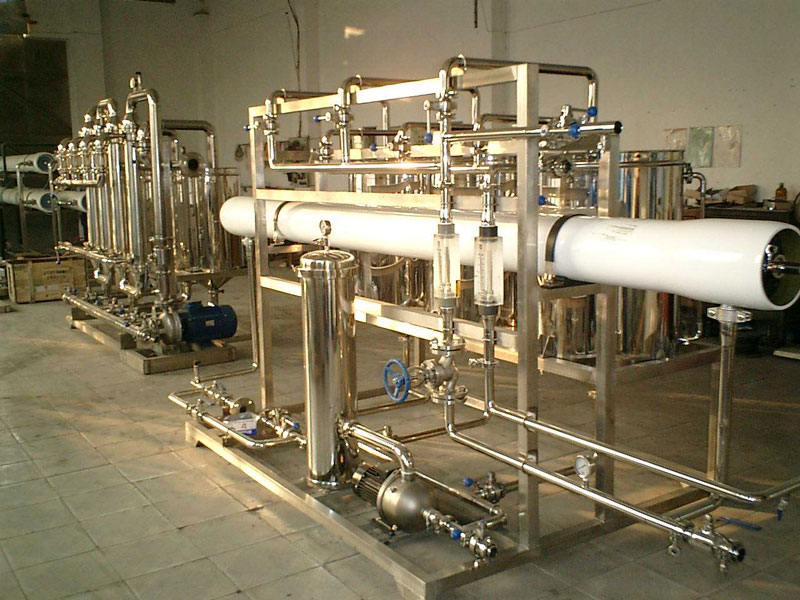
Tea has a long history in Chinese history. China is the birthplace of tea, the first country in the world to discover, breed and cultivate tea trees, and to process and utilize tea. It is also the world's largest tea producer, consumer and trading country.
China's tea industry has experienced rapid development in the past two decades. The area of tea gardens has reached more than two million hectares. The area of tea production in a large number of provinces is still rising rapidly, resulting in the increase of output of more than 100,000 tons or even 200,000 tons per year.
Behind the increase in area output, China's exports growth has been very slowly over the past ten years, and eventually remained at around 300,000 tons, sometimes even falling. In the context of the imbalance of tea production and sales, deep processing of tea has increasingly attracted the attention of the industry.
Although the amount of tea used for deep processing in China is not much each year, the benefits are not low. "Our deep processing industry today uses less than 7-8% of the middle and low-end teas of tea production to create a third of China's comprehensive tea output value.
The economic benefits of tea industry have much room for improvement.Deep processing will hold a share of responsibility and hope for the development of tea industry.
Traditional process
The final products of deep processing of tea are currently on the market mainly including tea beverages, instant tea powder, tea polyphenols, theophylline, theanine, etc.
According to the difference of the final product, the following processes are usually used in several steps or whole process: raw materials juice or water, solvent extraction (soluble components), filtration and centrifugation (removal of suspended particles and impurities), precipitation, extraction, ion exchange, adsorption, chromatography, etc. (extract functional ingredients), and finally vacuum distillation concentration and solvent recovery, spray or freeze-drying.
The shortcomings of traditional process:
-
In the stage of filtration and centrifugation, mechanical filtration, high-speed centrifugation and chemical treatment are mainly used in the traditional separation and extraction. The clarification effect is not good, the product quality is poor, and the transparency of tea liquid is poor, which makes the cold solubility of the final product instant tea and tea extract poor;
-
The use of heat treatment in the concentration stage will cause the loss of heat-sensitive substances and the process change is difficult to control;
-
The precipitant or solvent extraction has poor selectivity to the target, low product yield, high equipment investment, and difficult recovery of precipitant and solvent;
-
Using the above process to extract the functional components in the tea, the comprehensive utilization rate of tea is low, product purity is not high; energy consumption is large, pollution is heavy, and cost is high.
Membrane separation process :
Membrane separation technology, as a new and high technology in tea deep processing, can improve the separation and classification of effective components in tea extract without changing the color, aroma and taste of the target product and solve the problems of aroma loss, high energy consumption and three wastes caused by high temperature concentration.
Advantages of membrane separation process:
-
The membrane filtration has high precision, high clarity and good stability, which can solve the "cold muddy" phenomenon; the loss of tea polyphenols, theophylline, theanine and other effective components is less, and the product purity is improved;
-
It is a kind of green environmental protection technology without adding chemicals, pollution and residue;
-
The content of protein, tannin and pectin in the filtrate after ultrafiltration is greatly reduced, which improves the purity of its active ingredients, and also improves the higher precision pretreatment for subsequent membrane concentration, and its cleaning cycle and service life are prolonged;
-
The matching membrane concentration process is a normal process without phase change at room temperature , which avoids the disadvantages of high energy consumption , large fragrance loss , high procuct viscosity , and easy backmixing of traditional evaporation and concentration processes.
The application of membrane integration technology in clarification, separation, classification and concentration of tea extract has become an emerging green and energy-saving technology in the field of tea deep processing.
As a listed company in the field of membrane separation, JIUWU HI-TECH has accumulated rich project experience in tea comprehensive processing.
According to different final products of customers (including tea beverage, instant tea powder, tea polyphenols, theophylline, theanine, etc.), JIUWU HI-TECH can design the optimal membrane integration process and develop a more cost-effective complete set of equipment for deep processing of tea.
Fig1. Membrane separation technology in tea comprehensive processing






 +86-25-58849045
+86-25-58849045
 +86-25-58749295
+86-25-58749295
 jiuwu@jiuwu.com
jiuwu@jiuwu.com
 No. 9 Park Road, Pukou District, Nanjing City (Sanqiao Factory)
No. 9 Park Road, Pukou District, Nanjing City (Sanqiao Factory) Call us on:
Call us on:  Email Us:
Email Us:  No. 9 Park Road, Pukou District, Nanjing City (Sanqiao Factory)
No. 9 Park Road, Pukou District, Nanjing City (Sanqiao Factory)

 English
English 한국어
한국어 français
français русский
русский Español
Español

